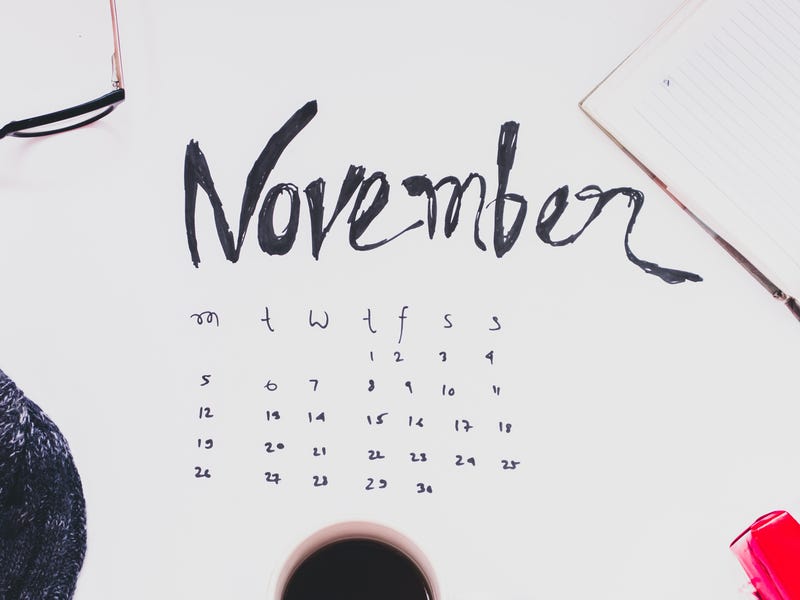
How to say the body part names in English
Have you ever picked someone's brain, lent someone a hand, or kept your chin up?
Body parts vocabulary is needed not just to describe the human body in English, but also used in plenty of idiomatic and slang expressions.
And even if you don't use idioms or slang, you still need to know how to name different parts of your body in your day-to-day life.
So, heads up, legs down! It's time to learn how to name body parts in English. This guide will show you how to name all the parts of the human body in depth, from top to bottom as well as your inside body parts. So keep reading!
Why learn about body parts in English?

Learning the names of various parts of the body in English can be helpful for a variety of situations. Let's take a look at a few of them.
1. Describing yourself or other people
To describe someone's appearance, you'll need vocabulary words like face, hair, eyes, and so on.
2. Understanding idiomatic expressions and common sayings
The English language uses body parts in many idioms and common expressions! Phrases such as a sweet tooth, cold shoulder, or itchy feet are used almost daily in English. Knowing the anatomy will make it easier to understand these expressions.
3. Visiting a doctor
If you’re experiencing some health issues, injuries, or pain, you’ll likely need to visit a doctor. Knowing the different body parts in English will help you communicate your symptoms to your doctor and avoid major miscommunication.
How to say “body” in English
So, let's start with the most basic word: body (baa-dee).
Body (noun): The whole physical structure that forms a person or animal, including the bones, flesh, and organs.
We usually use the word "body" with adjectives that describe it. For example:
- She has a fantastic body thanks to her workout routine.
- His muscular body felt weak because of the virus.
- The hard part is to keep your body fit after you have stopped playing sports.
Head in English
Head is another essential word in English. The head is the uppermost part of the body. The word “head” means the whole human or animal head, but it can also mean the top or front of an object. The head forms other important words such as headache (when your head hurts) or idioms.
Your head has many parts. Let's explore some vocabulary related to the head.
Face parts in English
Here are some of the most important words describing different face parts. Let’s dive into it!
| English | Pronunciation | Synonyms and Slang |
| Head | hed | Noggin (Irish), nut, dome, noodle |
| Face | feɪs | Mug |
| Ears | ɪəz | - |
| Eyes | aɪz | Peepers |
| Nose | nəʊz | Schnozz, honker, beak (all referring to a big nose) |
| Chin | tʃɪn | - |
| Cheeks | tʃiks | - |
| Forehead | fɒrɪd | - |
| Jaw | dʒɔ | - |
| Eyebrows | aɪbraʊz | - |
| Eyelashes | aɪlæʃɪz | - |
| Temple | templ̩ | - |
| Nostril | nɒstrəl | - |
| Lips | lɪps | - |
| Mouth | maʊθ | Trap, pie hole (both very rude) |
| Teeth/Tooth | tiθ / tuθ | Choppers |
| Tongue | tʌŋ | - |
| Hair | heə | - |
| Neck | nek | - |
Other parts
Now that you’re familiar with different face parts in English, it’s time to wrap your head around external body parts (pun intended).
| English | Pronunciation |
| Shoulders | ʃəʊldəz |
| Right Shoulder | raɪt ʃəʊldə |
| Left Shoulder | left ʃəʊldə |
| Elbow | elbəʊ |
| Forearm | fɔrɑm |
| Left Arm | left ɑm |
| Right Arm | raɪt ɑm |
| Wrist | rɪst |
| Hand | hænd |
| Right Hand | raɪt hænd |
| Left Hand | left hænd |
| Fingers | fɪŋɡəz |
| Thumb | θʌm |
| Index Finger/Pointer Finger | ɪndeks fɪŋgə / pɔɪntə fɪŋɡə |
| Middle Finger | mɪdl fɪŋɡə |
| Ring Finger | rɪŋ fɪŋgə |
| Pinky Finger | pɪŋki fɪŋɡə |
| Knuckles | nʌkl̩z |
| Nails | neɪlz |
| Chest | tʃest |
| Breast | brest |
| Waist | weɪst |
| Hips | hɪps |
| Left Leg | left leɡ |
| Right Leg | raɪt leɡ |
| Knee | ni |
| Thigh | θaɪ |
| Calf | kɑf |
| Ankle | æŋkl̩ |
| Foot/Feet | fʊt fit |
| Right Foot | raɪt fʊt |
| Left Foot | left fʊt |
| Toes | təʊz |
| Big Toe | bɪg təʊ |
Other inside body parts
Have you ever had butterflies in your stomach? How about a broken heart? Knowing your internal organs is a must, not only to express your feelings but also to express discomfort or pain.
| English | Pronunciation |
| Brain | breɪn |
| Lungs | lʌŋz |
| Heart | hɑt |
| Kidney | kɪdni |
| Liver | lɪvə |
| Stomach | stʌmək |
| Pancreas | pæŋkrɪəs |
| Large Intestine | lɑdʒ ɪntestɪn |
| Small Intestine | smɔl ɪntestɪn |
| Diaphragm | daɪəfræm |
| Oesophagus | isɒfəɡəs |
| Spleen | splin |
| Veins | veɪnz |
| Rectum | rektəm |
| Gallbladder | ɡɒlblædə |
| Bladder | blædə |
| Appendix | əpendɪks |
Songs about body parts
Learning body parts in English doesn’t have to be boring! There are many songs to help you remember this vocabulary. If you’re a music lover, you’ll have fun learning body parts in English through songs.
Head, Shoulders, Knees & Toes - Super Simple Songs
"Head, Shoulders, Knees, and Toes" is an old favorite that has been sung for generations. It's a great song to teach children parts of the body in English, together with some basic motor skills.
Put Your Head on My Shoulder - Paul Anka
If you’re not into children's songs, we’ve got you covered! “Put Your Head on My Shoulder” by Paul Anka is one of the most romantic songs ever, mentioning various body parts.
Hips Don’t Lie - Shakira
Are you more into dancing than singing? You can move your hips right to the rhythm of this Shakira song while learning about limbs.
Idioms about body parts
Many phrases and expressions use parts of the body in English. Some of them are pretty obvious, but it's easy to forget the less literal ones. Here are some useful body part idioms in English you can add to your anatomy vocabulary list:
| Body Part Idiom | Meaning |
| Keep your chin up | Stay cheerful and optimistic even when something bad has happened, or there are problems |
| Let your hair down | Relax |
| By the skin of your teeth | By a very narrow margin |
| Break a leg! | Used to wish someone good luck on an exam, test, or interview |
| Keep someone at arm’s length | Keep someone at a distance |
| Pick someone’s brain | Ask someone a lot of questions about something they are good at |
| Have butterflies in your stomach | Feel excited or nervous about something, especially an important event or a date |
| Have a broken heart | Suffer because of a love disappointment |
| Have something on the tip of your tongue | Almost remember something you want to say |
| Stick your neck out | Accept a risk, usually to defend someone or something |
| Get something off your chest | Open up about something |
| Give someone a hand | Help someone |
| Cost an arm and a leg | Be very expensive |
| Bite your tongue | Stop yourself from saying something |
| Be on your toes | Be alert |
| A slap on the wrist | Minor punishment |
| Tear your hair out | Be very frustrated or worried about something |
| Be all eyes and ears | Be very attentive |
| Turn a blind eye | Choose not to pay attention to something |
| Lend an ear | Be ready to listen to someone |
| Keep your head above | Have enough money to live on but not much more than that; manage to survive financially |
| Get a head start | Have an advantage at the beginning of something (a race) |
| Use your head | Think before you speak or act |
Fun tips to help you learn body part names faster
Not really into learning body parts vocabulary by heart or by singing songs? No worries! There are other ways to learn about the human anatomy.
Here are some tips to help you learn them faster:

1. Make it a game
Playing games is a dynamic and fun way to learn new vocabulary and memorize it more quickly! There are many games that you can play to learn body parts in English. Our favorite ones are:
Simon says: This is probably the most common game to learn about limbs. This game helps you remember the names of some of the most important body parts by touching the body part that “Simon” names. This game is best played in a group.
Alphabet game: This game consists of writing down as many words starting with each letter of the alphabet, from A to Z, as you can come up with. In this case, it would be all the limbs and appendages that you can think of! For example, A for Abdomen, B for Back, C for Chest, etc.
Quiz or trivia game: If you’re not into children’s games, you can play something more ambitious and informative, such as a quiz or trivia game related to body parts. Kahoot and Quizizz are two websites full of fun quizzes to learn new vocabulary in English (and other languages).
2. Use images and flashcards
Using images and flashcards is one of the best ways to learn English vocabulary, especially if you have a visual memory. You can create your own or find ready-made ones on the internet.
Once you find the flashcards or images you like, print them out or save them on your phone. Look at them during your free time, while waiting in line, or while eating.
3. Practice with conversation cards
This is a great way to use human body part vocabulary in a real conversation. You can print out conversation cards and practice with a friend or family member. Write down questions related to body parts, cut them up, and place them in a bag or box. Take turns asking each other questions from the box.
Ready to sink your teeth in?
Learning parts of the body in English can seem challenging at first because there’s a lot of new vocabulary you’ll need to master! However, learning body parts in English is pretty easy – and fun – with flashcards, games, and songs.
Let your hair down, enjoy the journey and have fun, instead of rushing into learning everything at once.
We hope that this article encourages you to learn about human anatomy and parts. Want to learn even more useful vocabulary in English? Check out our English courses, available both in person and as online English classes.


